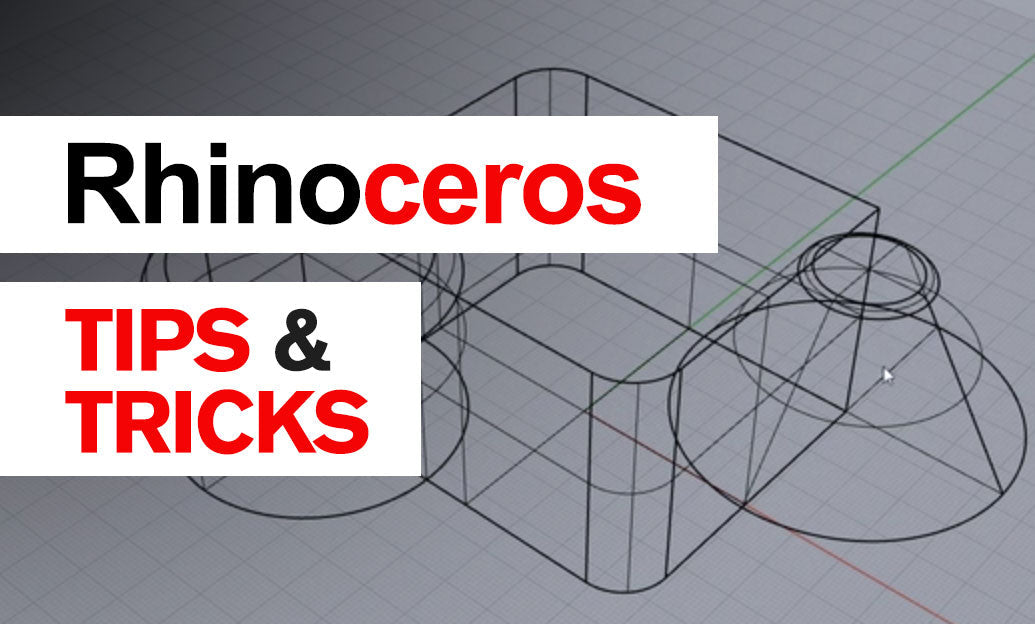Your Cart is Empty
Customer Testimonials
-
"Great customer service. The folks at Novedge were super helpful in navigating a somewhat complicated order including software upgrades and serial numbers in various stages of inactivity. They were friendly and helpful throughout the process.."
Ruben Ruckmark
"Quick & very helpful. We have been using Novedge for years and are very happy with their quick service when we need to make a purchase and excellent support resolving any issues."
Will Woodson
"Scott is the best. He reminds me about subscriptions dates, guides me in the correct direction for updates. He always responds promptly to me. He is literally the reason I continue to work with Novedge and will do so in the future."
Edward Mchugh
"Calvin Lok is “the man”. After my purchase of Sketchup 2021, he called me and provided step-by-step instructions to ease me through difficulties I was having with the setup of my new software."
Mike Borzage
Rhino 3D Tip: Optimizing Rhino 3D Workflow: Mastering File Import and Export for CAD Compatibility
April 27, 2024 2 min read

Welcome to today's tip for Rhino 3D Software users, focusing on streamlining your workflow by understanding the ins and outs of importing and exporting files, ensuring compatibility with other CAD software. Whether you're transitioning between different software or collaborating with others, these pointers will help you navigate compatibility challenges smoothly.
- File Formats: Rhino supports various file formats for both importing and exporting. Common formats include DWG/DXF (AutoCAD), STEP, IGES, and STL for 3D printing. Choose the format that best suits your needs and the requirements of the software you are interfacing with.
- Preserving Data: When exporting, consider what data needs to be preserved. Rhino allows you to export NURBS surfaces, meshes, and annotations, but the level of detail can vary depending on the chosen format.
- Version Compatibility: Be aware of version compatibility with other software. For instance, newer DWG files may not be readable by older versions of AutoCAD. Use the 'Save As' feature to save in a compatible version if necessary.
- Block Instances: If your Rhino model includes block instances, verify how they are exported. Some formats may convert these into individual objects, increasing file size and complexity.
- Tolerances: Set appropriate tolerances before exporting NURBS geometry to ensure curves and surfaces are accurately represented in the receiving software.
- Scaling Issues: Always check the units of both the Rhino file and the software you are exporting to. Inconsistent units can lead to scaling issues. Rhino allows you to transform the scale of your model before exporting.
- Export Selected: Use the 'Export Selected' command to export only the parts of the model you need, rather than the entire file. This can significantly reduce file size and simplify the model for the receiving application.
- Plug-ins: Some specialized file formats may require plug-ins. Check NOVEDGE for Rhino-compatible plug-ins that can extend your software's functionality.
- File Size: Large and complex models can result in very large files. Use mesh reduction tools and remove unnecessary details to manage the file size.
- Test Import/Export: Always test the imported or exported file to ensure that the transfer between software has retained the necessary detail and that there are no errors.
Embracing these best practices will help you to avoid common pitfalls and ensure a smooth transition of your 3D models between Rhino and other CAD applications. Remember, keeping an eye on compatibility details can save you time and frustration, allowing you to focus on the creative aspects of your design projects. For more tips, tools, and Rhino 3D resources, visit NOVEDGE.
```You can find all the Rhino products on the NOVEDGE web site at this page.
Also in Design News

Cinema 4D Tip: Optimizing Dynamic Motion with the Vibrate Tag in Cinema 4D
October 14, 2025 2 min read
Read More
Bluebeam Tip: Enhance PDF Management with Bluebeam's Slip Sheet Feature
October 14, 2025 2 min read
Read More
V-Ray Tip: Maximizing Realism in V-Ray Renders: Techniques for Stunning Water Reflections
October 14, 2025 2 min read
Read MoreSubscribe
Sign up to get the latest on sales, new releases and more …


